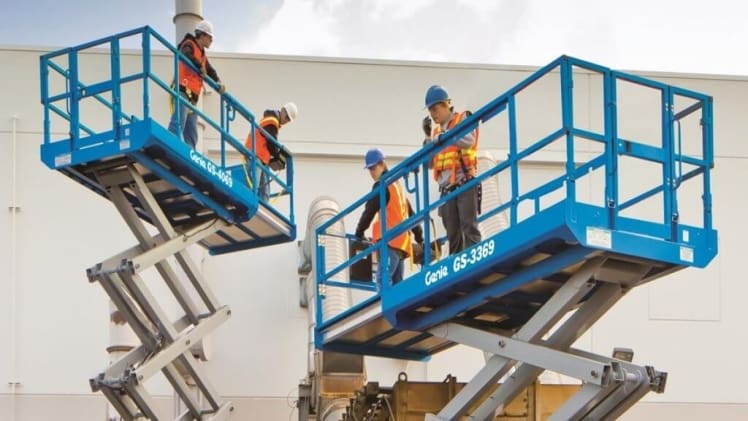Hiring an elevated work platform is an ideal solution for short-term projects or seasonal demands. Using the right elevated work platform hire can provide your team with many benefits, but it requires choosing a reputable equipment hire company. Doing this allows you to work and elevate in restricted spaces, narrow aisles, hard-to-reach areas, and heights.
The Advantages of Hiring Elevated Work Platforms
With many advantages, including flexible hire lengths and fast delivery, a mobile elevating work platform is popular for businesses that need the equipment.
Depending on the complexity of the job ahead, you can utilise, set up, and transport these aerial work platforms easily and quickly. Some models can complete multiple jobs in various locations. There are vehicle-mounted work platforms that provide optimum portability, while larger aerial devices can be set up on-site after road towing. Lightweight elevated work platforms with low ground pressure, such as spider lifts or scissor lifts, are ideal for building interiors or tighter spaces. You can use them externally and internally, as they can fit through many gates and doorways without damaging pathways and floorings.
If your job is in extreme conditions, you can still access them with the right elevating work platforms such as boom lifts that can manoeuvre on steep-sloped ground, hard to reach places, and so on.
Cost-effectiveness is another benefit you can get from using elevated work platform hire. Time is money for most jobs, and these mechanical devices help you save money by increasing efficiency and speed. They are safe and convenient, cutting down time spent on setting up and on risk assessment.
The aerial work platforms also save on labour costs, as they are easy to control and require few workers to operate them. You can also use them to lift specialist equipment and heavy materials that may be expensive to transport and move around using other options.
Safe Work Practices Using Elevated Work Platforms
Operators must follow the best practices for operating the mobile elevating work platform to keep the machinery working efficiently and safely. Conduct inspection and tests on the aerial work platform before every use. In the event that the machinery fails a test, remove it immediately from service until a qualified technician repairs it.
Also, before you move the elevated work platform from the job site, perform a risk assessment. Check for holes, drop-offs, power lines, unstable surfaces, slopes, overhead obstacles, and other hazards. Make sure to devise a plan to avoid all potential threats through the entire phases of operation.
It is important to keep the floor of the elevated work platform for hire clear of debris. Toolboxes, buckets, scrap materials, etc., can become a tripping hazard. Get rid of any object from the machinery that is not necessary to the task.
Using an aerial work platform comes with wearing proper protection, particularly for falls. This is because even the slightest movement at the machine base can result in a sudden jerk at the elevated platform. In such a scenario, wearing the right protection can lessen the likelihood of accidents and injuries happening.
It is best to complete proper training to become familiar with mobile elevating work platforms, particularly those you will be operating. This includes reading the safety signs and operator’s manual on the mechanical device. This helps you understand the placement and function of the controls and safety devices before operation.

